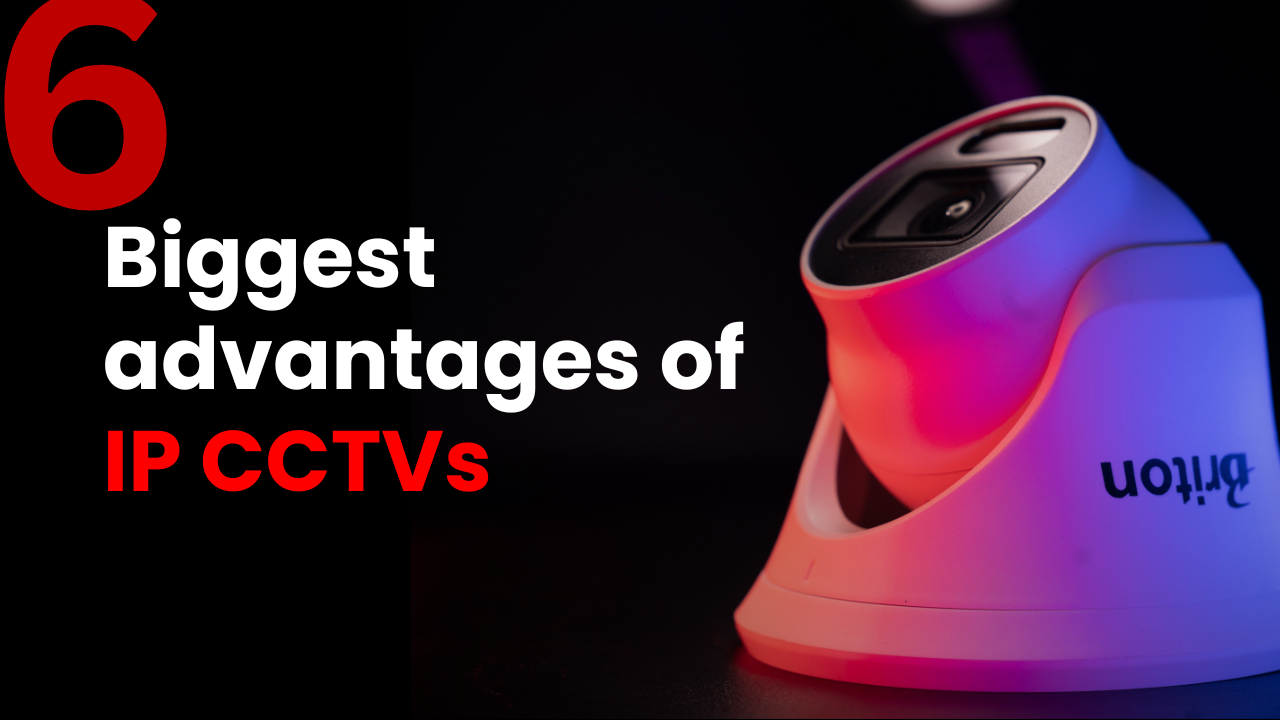In today’s digital age, surveillance cameras play a crucial role in ensuring security and protecting valuable assets. With advancements in technology, the debate between IP cameras and analog cameras has become increasingly relevant. In this article, we will dissect the advantages of IP (Internet Protocol) cameras over their analog counterparts, shedding light on why they are superior in today’s tech-savvy world.

Advantages of IP cameras over analog cameras.
IP cameras provide a range of benefits that set them apart from analog cameras. Firstly, their higher resolution and image clarity allow for better analytical capabilities and more accurate identification of individuals or objects. Additionally, IP cameras offer greater flexibility in installation due to their wireless capabilities, making them easier to set up and reposition. With features like remote access and 24/7 live streaming, IP cameras allow users to monitor their property anytime, anywhere.
Moreover, the scalability of IP camera systems enables easy expansion and integration of additional devices or features, providing a future-proof solution. With the ability to integrate with other security systems and advanced analytics, IP cameras offer a comprehensive and intelligent surveillance solution.
In conclusion, the advantages of IP cameras over analog cameras are numerous and undeniable. Their enhanced image quality, flexibility, and scalability make them the ideal choice for anyone looking to take their surveillance to the next level in the digital era.
Improved image quality and resolution
One of the primary advantages of IP cameras over analog cameras is their higher resolution and image clarity. IP cameras capture footage in digital format, resulting in superior image quality and finer details. This enhanced resolution allows for better analytical capabilities and more accurate identification of individuals or objects. Whether it’s monitoring a crowded area or identifying a suspect in a crime, the clarity provided by IP cameras can make a significant difference.
Furthermore, IP cameras offer the option of megapixel resolution, which is far superior to the limited resolution capabilities of analog cameras. Megapixel cameras can capture more pixels, resulting in sharper and more detailed images. This increased level of detail is invaluable in situations where identification is crucial, such as in law enforcement or high-security environments.
In addition to the higher resolution, IP cameras also provide better image processing capabilities. With advanced technologies like Wide Dynamic Range (WDR) and digital noise reduction, IP cameras can deliver clear and balanced images even in challenging lighting conditions. The ability to capture accurate and detailed footage is a game-changer when it comes to surveillance.Flexible installation options
Another advantage of IP cameras is their greater flexibility in installation. Unlike analog cameras, which require physical cabling to connect to a central recording system, IP cameras can transmit data wirelessly. This wireless capability allows for easier setup and repositioning of cameras as needed.
With analog cameras, the installation process can be cumbersome and time-consuming. It often involves running cables through walls and ceilings, which can be challenging, especially in existing structures. On the other hand, IP cameras can be set up and integrated into existing networks without the need for extensive cabling. This flexibility not only saves time but also reduces costs associated with installation.
Furthermore, the wireless nature of IP cameras enables users to expand their surveillance coverage without the limitations of physical cabling. Additional cameras can be easily added to the network, providing a scalable solution that can adapt to evolving security needs. Whether it’s expanding the coverage of a single building or connecting multiple locations, IP cameras offer a level of flexibility that analog cameras simply cannot match.Remote access and monitoring
IP cameras take surveillance to the next level with features like remote access and 24/7 live streaming. With traditional analog cameras, monitoring is limited to the physical location where the cameras are installed. This means that if you want to check on your property or monitor a specific area, you have to be physically present. However, with IP cameras, you can access the live footage from anywhere in the world, as long as you have an internet connection.
The ability to remotely monitor your property or business brings a new level of convenience and peace of mind. Whether you’re travelling or simply away from the premises, you can keep an eye on things in real-time. This feature is particularly valuable for businesses that have multiple locations or homeowners who want to ensure the safety of their property when they are not present.
Additionally, IP cameras provide the option of mobile viewing through smartphone applications. This means that you can access the camera feed on your smartphone or tablet, giving you the flexibility to monitor your property on the go. The convenience of remote access and monitoring is a significant advantage that IP cameras offer over analog cameras.Advanced features and analytics
IP cameras come equipped with a wide range of advanced features and analytics that enhance their surveillance capabilities. These features include motion detection, facial recognition, licence plate recognition, and object tracking, to name a few. By leveraging these advanced technologies, IP cameras can provide more than just basic surveillance footage.
Motion detection is a valuable feature that allows the camera to detect movement and trigger an alert or recording. This feature helps reduce storage space and eliminates the need to sift through hours of footage. Facial recognition takes identification to the next level by allowing the camera to recognize and identify individuals based on their facial features.
Licence plate recognition is particularly useful in parking lots or high-security areas where keeping track of vehicles is crucial. With IP cameras equipped with this feature, you can automatically capture and store licence plate information, providing an additional layer of security and accountability.
Object tracking is another advanced feature that enables the camera to track the movement of specific objects within its field of view. This feature is particularly useful in scenarios where monitoring a specific object is critical, such as in retail environments or areas with high-value assets.
The availability of these advanced features and analytics sets IP cameras apart from analog cameras, providing a comprehensive and intelligent surveillance solution.Cost-effectiveness and scalability
Contrary to popular belief, IP cameras can be a cost-effective option in the long run. While analog cameras may have a lower upfront cost, they often require additional equipment and infrastructure, such as DVRs (Digital Video Recorders) and coaxial cables. On the other hand, IP cameras utilise existing network infrastructure, eliminating the need for additional hardware.
The scalability of IP camera systems is another cost-saving advantage. With analog cameras, expanding the surveillance coverage often means installing additional cables and equipment, which can be time-consuming and expensive. In contrast, IP cameras can be easily integrated into existing networks, allowing for seamless expansion without the need for extensive cabling.
Furthermore, IP cameras offer the flexibility to choose the level of resolution and features based on specific needs and budgets. This scalability allows users to start with a smaller setup and gradually expand as required, making it a more cost-effective solution in the long run.Integration with other security systems
Another significant advantage of IP cameras is their ability to integrate with other security systems. IP cameras can seamlessly integrate with access control systems, alarms, and other security devices, creating a comprehensive security solution. This integration allows for the exchange of information between different systems, providing a more holistic approach to security.
For example, when an IP camera detects motion or an alarm is triggered, it can send a notification to the access control system, allowing security personnel to take immediate action. This level of integration enhances situational awareness and response capabilities, making the overall security system more efficient and effective.
Additionally, IP cameras can integrate with advanced analytics software, such as facial recognition or people counting. These analytics can provide valuable insights and data to optimize security protocols, improve operational efficiency, and enhance overall safety.

Conclusion
In conclusion, the advantages of IP cameras over analog cameras are numerous and undeniable. Their enhanced image quality, flexibility, and scalability make them the ideal choice for anyone looking to take their surveillance to the next level in the digital era. With features like remote access, advanced analytics, and integration with other security systems, IP cameras provide a comprehensive and intelligent surveillance solution.
As technology continues to evolve, it’s clear that IP cameras are the future of surveillance cameras. Their ability to capture high-quality footage, offer flexible installation options, provide remote access, and integrate with other security systems make them a superior choice in today’s tech-savvy world. Whether it’s for residential, commercial, or industrial applications, IP cameras offer a level of security and convenience that is unmatched by analog cameras. Embracing the digital eye of IP cameras is the logical choice for those seeking advanced surveillance capabilities.







